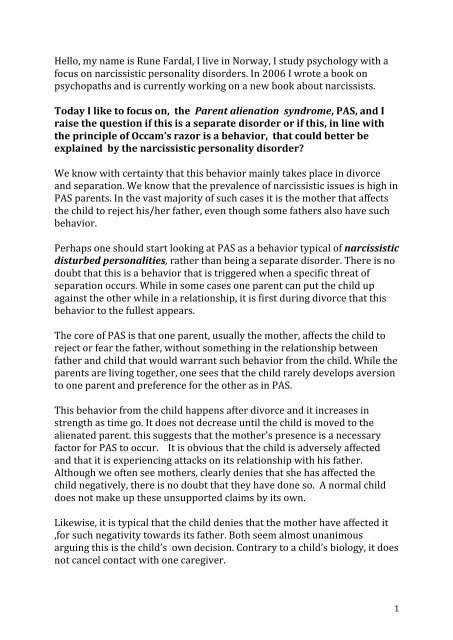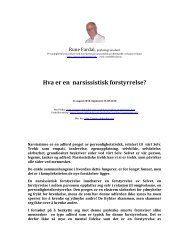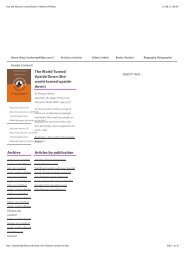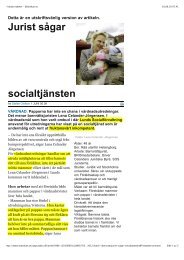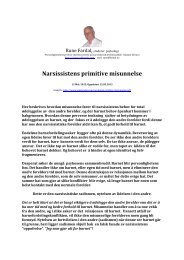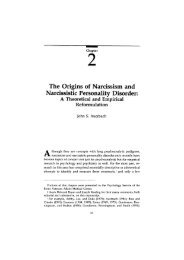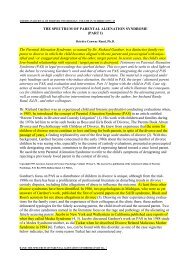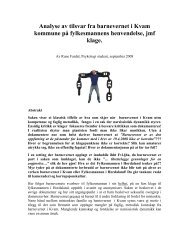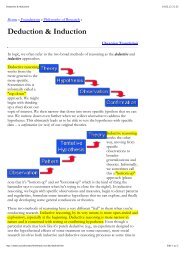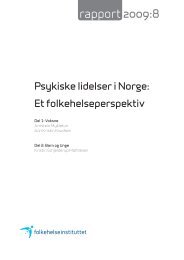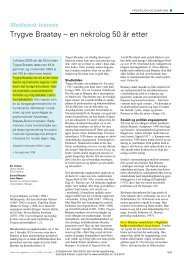Hello, my name is Rune Fardal, I live in Norway, I study psychology ...
Hello, my name is Rune Fardal, I live in Norway, I study psychology ...
Hello, my name is Rune Fardal, I live in Norway, I study psychology ...
Create successful ePaper yourself
Turn your PDF publications into a flip-book with our unique Google optimized e-Paper software.
<strong>Hello</strong>, <strong>my</strong> <strong>name</strong> <strong>is</strong> <strong>Rune</strong> <strong>Fardal</strong>, I <strong>live</strong> <strong>in</strong> <strong>Norway</strong>, I <strong>study</strong> <strong>psychology</strong> with a <br />
focus on narc<strong>is</strong>s<strong>is</strong>tic personality d<strong>is</strong>orders. In 2006 I wrote a book on <br />
psychopaths and <strong>is</strong> currently work<strong>in</strong>g on a new book about narc<strong>is</strong>s<strong>is</strong>ts. <br />
Today I like to focus on, the Parent alienation syndrome, PAS, and I <br />
ra<strong>is</strong>e the question if th<strong>is</strong> <strong>is</strong> a separate d<strong>is</strong>order or if th<strong>is</strong>, <strong>in</strong> l<strong>in</strong>e with <br />
the pr<strong>in</strong>ciple of Occam’s razor <strong>is</strong> a behavior, that could better be <br />
expla<strong>in</strong>ed by the narc<strong>is</strong>s<strong>is</strong>tic personality d<strong>is</strong>order? <br />
We know with certa<strong>in</strong>ty that th<strong>is</strong> behavior ma<strong>in</strong>ly takes place <strong>in</strong> divorce <br />
and separation. We know that the prevalence of narc<strong>is</strong>s<strong>is</strong>tic <strong>is</strong>sues <strong>is</strong> high <strong>in</strong> <br />
PAS parents. In the vast majority of such cases it <strong>is</strong> the mother that affects <br />
the child to reject h<strong>is</strong>/her father, even though some fathers also have such <br />
behavior. <br />
Perhaps one should start look<strong>in</strong>g at PAS as a behavior typical of narc<strong>is</strong>s<strong>is</strong>tic <br />
d<strong>is</strong>turbed personalities, rather than be<strong>in</strong>g a separate d<strong>is</strong>order. There <strong>is</strong> no <br />
doubt that th<strong>is</strong> <strong>is</strong> a behavior that <strong>is</strong> triggered when a specific threat of <br />
separation occurs. While <strong>in</strong> some cases one parent can put the child up <br />
aga<strong>in</strong>st the other while <strong>in</strong> a relationship, it <strong>is</strong> first dur<strong>in</strong>g divorce that th<strong>is</strong> <br />
behavior to the fullest appears. <br />
The core of PAS <strong>is</strong> that one parent, usually the mother, affects the child to <br />
reject or fear the father, without someth<strong>in</strong>g <strong>in</strong> the relationship between <br />
father and child that would warrant such behavior from the child. While the <br />
parents are liv<strong>in</strong>g together, one sees that the child rarely develops aversion <br />
to one parent and preference for the other as <strong>in</strong> PAS. <br />
Th<strong>is</strong> behavior from the child happens after divorce and it <strong>in</strong>creases <strong>in</strong> <br />
strength as time go. It does not decrease until the child <strong>is</strong> moved to the <br />
alienated parent. th<strong>is</strong> suggests that the mother's presence <strong>is</strong> a necessary <br />
factor for PAS to occur. It <strong>is</strong> obvious that the child <strong>is</strong> adversely affected <br />
and that it <strong>is</strong> experienc<strong>in</strong>g attacks on its relationship with h<strong>is</strong> father. <br />
Although we often see mothers, clearly denies that she has affected the <br />
child negatively, there <strong>is</strong> no doubt that they have done so. A normal child <br />
does not make up these unsupported claims by its own. <br />
Likew<strong>is</strong>e, it <strong>is</strong> typical that the child denies that the mother have affected it <br />
,for such negativity towards its father. Both seem almost unanimous <br />
argu<strong>in</strong>g th<strong>is</strong> <strong>is</strong> the child’s own dec<strong>is</strong>ion. Contrary to a child’s biology, it does <br />
not cancel contact with one caregiver. <br />
<br />
1
In a sett<strong>in</strong>g where both mother and the child alleges that the mother has no <br />
responsibility, one f<strong>in</strong>ds it strange that, the mother can not give examples <br />
to what she has done <strong>in</strong> order for the child to ma<strong>in</strong>ta<strong>in</strong> its v<strong>is</strong>itation with its <br />
father. <br />
Equally elusive <strong>is</strong> the answer when you ask these children what <strong>is</strong> the <br />
reason they will not see their father and why they suddenly become so <br />
negative to meet him. The father they <strong>in</strong> the relation ship most often <br />
adored! <br />
There <strong>is</strong> someth<strong>in</strong>g wrong with such children that, on one side <strong>is</strong> very clear <br />
that they do not want to v<strong>is</strong>it their father, but on the other side, can not <br />
provide any clear answer to the cause of th<strong>is</strong> aversion. It <strong>is</strong> obvious that <br />
they protect the mother. Thy are bra<strong>in</strong>washed and manipulated. And <br />
chang<strong>in</strong>g a child’s memory has been shown to be a simple case I scientific <br />
studies. <br />
Similarly, there <strong>is</strong> very little mother has done to get the child on v<strong>is</strong>itation <br />
when th<strong>is</strong> <strong>in</strong>teraction ceases. Most often, the mother can not describe any <br />
effort to improve such a v<strong>is</strong>itation. Some times they can claim they have <br />
tried to ask others to help, but they themselves have little to show for. <br />
On the contrary such mothers project responsibility on to the child to keep <br />
contact with its father. Mother d<strong>is</strong>claims responsibility, the child assigned <br />
responsibility. Th<strong>is</strong> alone <strong>is</strong> a clear example of an adult fail<strong>in</strong>g its <br />
responsibilities. <br />
Further, one may <strong>in</strong> some cases see that a certa<strong>in</strong> ambivalence sh<strong>in</strong>es <br />
through <strong>in</strong> such children. They can express that the father did not want <br />
anyth<strong>in</strong>g to do with them, while documented beyond any doubt, the father <br />
has done everyth<strong>in</strong>g possible to br<strong>in</strong>g about such contact. <br />
In many cases, there are <strong>in</strong>dications that the child has a long<strong>in</strong>g for their <br />
father, expressed as an accusation aga<strong>in</strong>st the father that he "does not care" <br />
“does not make contact” with the child, even though the opposite <strong>is</strong> clearly <br />
documented. Aga<strong>in</strong>, the voice we hear <strong>is</strong> the mothers. <br />
Often these conflicts escalates when the professionals with no knowledge of <br />
PAS take the child and mother's statement at face value and without further <br />
knowledge assume these statements to be true : <br />
Child: I will not v<strong>is</strong>it <strong>my</strong> father! I hate him! <br />
<br />
2
Mother: I have done everyth<strong>in</strong>g to make v<strong>is</strong>itation possible! <br />
Hate -‐ statements like th<strong>is</strong> from a child <strong>is</strong> not a vocabulary one expects from <br />
a child. Th<strong>is</strong> <strong>is</strong> a projection from the mother, forwarded by the child. It’s the <br />
child’s strategy for surviv<strong>in</strong>g <strong>in</strong> an environment hostile to its father. It’s a <br />
sort of Stockholm syndrome where the child reflects the mothers voice <strong>in</strong> <br />
order to avoid be a victim of her aggression. <br />
Based on these statements some psycholog<strong>is</strong>ts, social workers and judges <br />
reason that there must be “someth<strong>in</strong>g” negative <strong>in</strong> the relationship between <br />
child and father for such aversion to occur. <br />
They hear the mother has made a "wholehearted commitment" without that <br />
hav<strong>in</strong>g helped. Further it appears that the child <strong>is</strong> very clear <strong>in</strong> its aversion <br />
to contact its father. And today children shall be heard the older they get. <br />
The problem <strong>is</strong>, its not the child’s words that the voice <strong>is</strong> carry<strong>in</strong>g. The <br />
problem <strong>is</strong> that such an aversion <strong>is</strong> never given a real reason! The child’s <br />
voice <strong>is</strong> the echo of the mother, they are bra<strong>in</strong>washed. <br />
It <strong>is</strong> only when one has knowledge of narc<strong>is</strong>s<strong>is</strong>tic dynamics, and knowledge <br />
of the <strong>psychology</strong> of attachment, that one may realize that th<strong>in</strong>gs are not <br />
what they seem. <br />
Typical of narc<strong>is</strong>s<strong>is</strong>ts <strong>is</strong> that they need a narc<strong>is</strong>s<strong>is</strong>tic supply. At the same <br />
time, their basic problem <strong>is</strong> shame. The fear of be<strong>in</strong>g alone, loss experience, <br />
the fear of what the environment says if the child <strong>live</strong>s with the father, <br />
activate <strong>in</strong> <strong>my</strong> op<strong>in</strong>ion PAS dynamics. <br />
Jealousy and revenge are two other typical features of narc<strong>is</strong>s<strong>is</strong>tic <strong>is</strong>sues. A <br />
parent who kills the child <strong>in</strong> order for to hurt the other parent, are <br />
described <strong>in</strong> the news almost weekly from all over the world. It's the <br />
narc<strong>is</strong>s<strong>is</strong>ts ultimate revenge, at the same time document<strong>in</strong>g the total <br />
absence of empathy <strong>in</strong> such a parent. <br />
By prevent<strong>in</strong>g contact with the father, the mother has her need for revenge <br />
sat<strong>is</strong>fied. Narc<strong>is</strong>s<strong>is</strong>ts lacks empathy and don’t care about how th<strong>is</strong> affects <br />
the child. On the contrary, they use the child by manipulat<strong>in</strong>g it <strong>in</strong> more or <br />
less subtle ways to take it away from the father. <br />
<br />
3
These mothers play the victim role and get the child to pity them, the child <br />
must “protect the mother”. Such expectations, b<strong>in</strong>ds the child <strong>in</strong> an <br />
unhealthy dependency to a d<strong>is</strong>turbed mother. <br />
Seen from a narc<strong>is</strong>s<strong>is</strong>tic view, PAS does not appear as a separate personality <br />
d<strong>is</strong>order, but as a behavior especially narc<strong>is</strong>s<strong>is</strong>ts adopt when they are <strong>in</strong> <br />
danger of be<strong>in</strong>g abandoned. So <strong>in</strong> stead of say<strong>in</strong>g PAS parents may show <br />
narc<strong>is</strong>s<strong>is</strong>tic traits, on should say narc<strong>is</strong>s<strong>is</strong>ts use alienation as a defence for <br />
loss and the need for revenge. <br />
There <strong>is</strong> a criterion of a personality d<strong>is</strong>order that it should permeate the <br />
person <strong>in</strong> many different sett<strong>in</strong>gs over a longer period of time. The behavior <br />
seen <strong>in</strong> “Parental alienation syndrome” seems to be traits that becomes <br />
apparent <strong>in</strong> a given situation and thus an expression of narc<strong>is</strong>s<strong>is</strong>tic <br />
d<strong>is</strong>order, rather than as a separate d<strong>is</strong>order. <br />
One must remember that <strong>in</strong> order for th<strong>is</strong> behavior to take place ne need a <br />
personality who’s traits are similar to the narc<strong>is</strong>s<strong>is</strong>t. The underly<strong>in</strong>g <br />
structures that lead to th<strong>is</strong> behavior <strong>is</strong> typical narc<strong>is</strong>s<strong>is</strong>tic traits. PAS, and its <br />
underly<strong>in</strong>g dynamics <strong>is</strong> about the adult's needs and behavior. The child <strong>is</strong> <br />
just a tool for th<strong>is</strong>. <br />
A child who <strong>live</strong>s alone with a parent, where the other parent <strong>is</strong> dead or not <br />
ex<strong>is</strong>t<strong>in</strong>g <strong>in</strong> the child's life, never develop PAS! Th<strong>is</strong> shows that you need a <br />
d<strong>is</strong>turbed parent <strong>in</strong> order to create such a behavior <strong>in</strong> a child. And research <br />
have shown that remov<strong>in</strong>g such a child to its alienated parent, reduce th<strong>is</strong> <br />
behavior <strong>in</strong> a child. <br />
It's a narc<strong>is</strong>s<strong>is</strong>tic parent's fear of loss and need for revenge that enable PAS, <br />
its not the other way around. Because a normal parent with empathy <br />
would not expose a child to th<strong>is</strong> behavior. <br />
DSM 5 has a description of Narc<strong>is</strong>s<strong>is</strong>tic personality d<strong>is</strong>order and both the <br />
overt and the covert type of narc<strong>is</strong>s<strong>is</strong>ts are capable of th<strong>is</strong> alienat<strong>in</strong>g <br />
behavior. <br />
Thank you <br />
<br />
4


